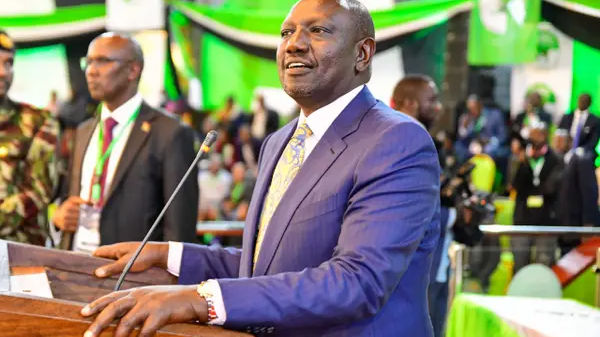The results of the Kenyan elections were questioned, and there were concerns about violent protests, for nearly a week before incumbent Deputy President William Ruto was declared the winner.
Ruto received 7,176,141 votes, while Raila Odinga received 6,942,930 votes. According to Kenya-based The Standard, the other two candidates in the race, David Mwaure and George Wajackoyah, received 31,987 and 61,969 votes, respectively.
Also Read| With Liz Cheney’s Congress exit, what’s next for the January 6 committee?
Chief of Kenya’s Election Commission Wafula Chebukati declared on Monday that William Samoei Ruto had been legitimately elected as the nation’s leader.
After the results were announced, videos posted on social media showed chaos at an election location in Nairobi, the country’s capital. Before security pushed the mob back and put the lectern back together, protesters could be seen tearing down the stage’s lectern and turning chairs upside down.
Also Read| Russian court fines Twitch over ‘fake’ video
Ruto promised in his first speech as President-elect to run a “transparent, open, democratic government” and to collaborate with the opposition “to the extent that they provide oversight” over his administration. “There is no room for vengeance. There is no room for looking back. We are looking into the future,” he stated.
Odinga called the election results a “travesty” late Tuesday. According to Reuters, he stated, “Our view is that the figures announced by Chebukati are null and void and must be quashed by a court of law.”
Also Read| Indian government to discuss possibility of common charger for all phones, laptops
Here’s why the citizens in Kenya are protesting-
Odinga, who was polling well, is widely expected to appeal the verdict in Kenya’s Supreme Court. This is primarily due to two factors: the narrow margin of victory and public dissatisfaction with the results within the Election Commission.
According to the Independent Electoral and Boundaries Commission (IEBC) chief, 55-year-old Ruto received 50.49 percent of the votes, while Odinga received 48.85 percent. Kenyan presidents are elected through direct elections in which the winner must receive more than 50% of the total votes cast and more than 25% of the votes cast in 24 of the 47 counties. The narrow margin between the two candidates has sparked debate about the results’ accuracy.
Also Read| Soaring food and energy costs drive United Kingdom’s inflation to 10.1%
In addition, four members of the seven-member Election Commission publicly distanced themselves from the final results on Monday, citing the process’s opacity.
The allegations were dismissed by the IEBC chairman. According to X N Iraki, a Kenyan economist and columnist, in an email to The Indian Express, this is a chance for Odinga to reclaim the presidency after four previous defeats in 1997, 2007, 2013, and 2017. For Ruto, it is the prospect of going up against the establishment that supported Odinga. “It appears that the commission became engrossed in these high-stakes games,” he added.
Also Read| Amazon workers in Albany file to unionize
In addition, a missing IEBC election official was discovered dead on Tuesday, raising suspicions of foul play.
The IEBC has named Ruto as president-elect and his running mate, Rigathi Gachagua, as deputy president-elect. Ruto is expected to receive a security briefing from security agencies such as the Kenyan Defence Forces and the National Police Service.
Also Read| Gadkari, Chouhan dropped from BJP parliamentary board, Yediyurappa in
The losing candidates can appeal the results to Kenya‘s Supreme Court, which has the power to either reject the petition or void the election. The winner can assume office two weeks after the decision is made if it rejects the challenge. If not, a new round of elections must be held within 60 days.
According to reports in the local media, if none of the contestants go before the court, Ruto will be sworn in as Kenya’s fifth president on August 30.







